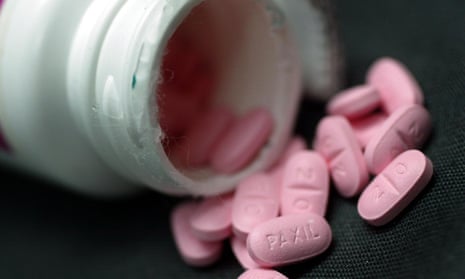Big pharma isn’t known for its fair dealing in the global South. Infamously, the high cost of patented HIV antiretroviral drugs (ARVs) in the early 2000s priced out developing countries and millions died. Patent wars still rage, notably in India and South Africa, as the industry attempts to maintain monopolies on life-saving drugs.
So why is pharmaceutical company AstraZeneca (AZ) funding an 18-month pilot with five separate NGOs in Kenya to improve health services for hypertension patients and discounting its core hypertension drugs by 90% in the process? Is big pharma finally getting serious about meeting the needs of the global poor?
Enlightened self-interest
AZ’s Healthy Heart Africa programme, which aims to reach 10 million hypertensive patients across Sub-Saharan Africa by boosting healthcare infrastructure, is not the only example of the industry attempting a more enlightened approach. Novo Nordisk’s Buddy Doctor Initiative, for example, provides local diabetes experts as mentors for GPs in 14 African countries. Likewise, last year GlaxoSmithKline fast-tracked an Ebola vaccine, which seemingly made little business sense.
The latest Access to Medicine Index of the top 20 pharmaceutical companies’ efforts in developing countries describes an industry “doing increasingly more to improve access to medicine in developing countries … paying attention to socioeconomic factors such as people’s ability to pay”.
AZ’s Mark Mallon, executive vice president, explains that its business plan is adapting to a changing global market: “We see emerging markets – and Africa is a key part of that – as an opportunity to reach more patients and grow our business.”
Charles Clift, senior consulting fellow at the Centre on Global Health Security at Chatham House, says “a lot of this activity is best considered as enlightened self-interest”, even where it’s not immediately profitable. And this, he adds, is “no bad thing”.
The profit motive
However, not everyone is convinced. Rohit Malpani, director of policy and analysis for Médecins Sans Frontières’ (MSF) Access campaign, believes “it is an industry that is continuing to fail to meet needs [and continuing with] very high costs for new medicines.” Pharma companies expanding their reach within developing countries will simply hold out for stricter measures of IP protection to corner these markets to secure long-term returns, he argues.
“We don’t [call for] the pharma industry to develop health systems approaches to increasing access,” says Malpani, referring to AZ’s Healthy Heart Africa project. “That’s the responsibility of governments, donors, the WHO. The industry should focus on what it is intended to do, which is … making the right products at the right price.”
Price is ultimately the area where the pharma industry has the most control – and the worst track record. MSF’s The Right Shot report describes a “notoriously opaque market” which inhibits efforts to improve affordability: “Price secrecy is ubiquitous … many require vaccine purchasers to sign price confidentiality clauses that forbid disclosure of pricing information.”
Clift points to biopharmaceutical company Gilead Sciences Inc’s hepatitis C drug Sovaldi, which grossed $10bn in its first year and can cost up to $84,000 for an 8–12 week treatment. Similar cases of high prices are rife. No one really knows their true cost of production, only that it is “so very much less” than the retail price, says Clift. “It is just a question of what they can get the market to pay … The key element to [improving] access to medicine is whether you can afford it.”
Big pharma continues to argue that it needs these profits to invest in R&D in order to come up with life-saving drugs. But, according to the WHO, the world’s largest pharmaceutical companies typically boast profit margins of about 30% and spend twice as much on marketing as they do on R&D. Are they really willing to switch focus to the low returns offered in developing countries?
New business models
Some pharmaceutical firms are already offering tiered pricing structures to certain developing countries for drugs calculated according to average income per head (117 out of 700 products captured by the Access to Medicine Index 2014 were tiered). The Global Alliance for Vaccines and Immunisation (Gavi), launched in 2000 with the backing of the Gates Foundation, brought pharma on board to offer cut-price childhood vaccines for the poorest countries (currently 49 qualify).
The UN-backed Medicines Patent Pool also negotiates licences to generic companies to produce HIV drugs and has distributed over 1.5bn affordable ARV tablets since 2012. Clift, who chairs the Medicines Patent Pool, believes patent pooling is a successful model that could be applied to other disease groups, such as non-communicable diseases. But there seems little appetite within the industry, he says. HIV is still seen as “a special case”.
But such mechanisms still look more like philanthropy than core business strategy. Perhaps the most enlightening aspect of the AZ programme in Kenya is how low prices can form part of a sustainable business model. AZ has made its branded blood pressure drugs Plendil and Zestoretic available to NGO partners for 90% less than its general retail price, at just $3.50 per patient per month. This, says Mallon, still makes “a little bit of profit margin for us, which we then are reinvesting into the programme.”
Big pharma can slash the price when it wants to and still make profit. For low income countries, where up to 90% of people pay for medicine out of their own pocket, that could make all the difference.
- This article was amended on 29 June 2015 to correct the number of tiered products captured on the Access to Medicine Index from 230 of 700 to 117 of 700.

Comments (…)
Sign in or create your Guardian account to join the discussion